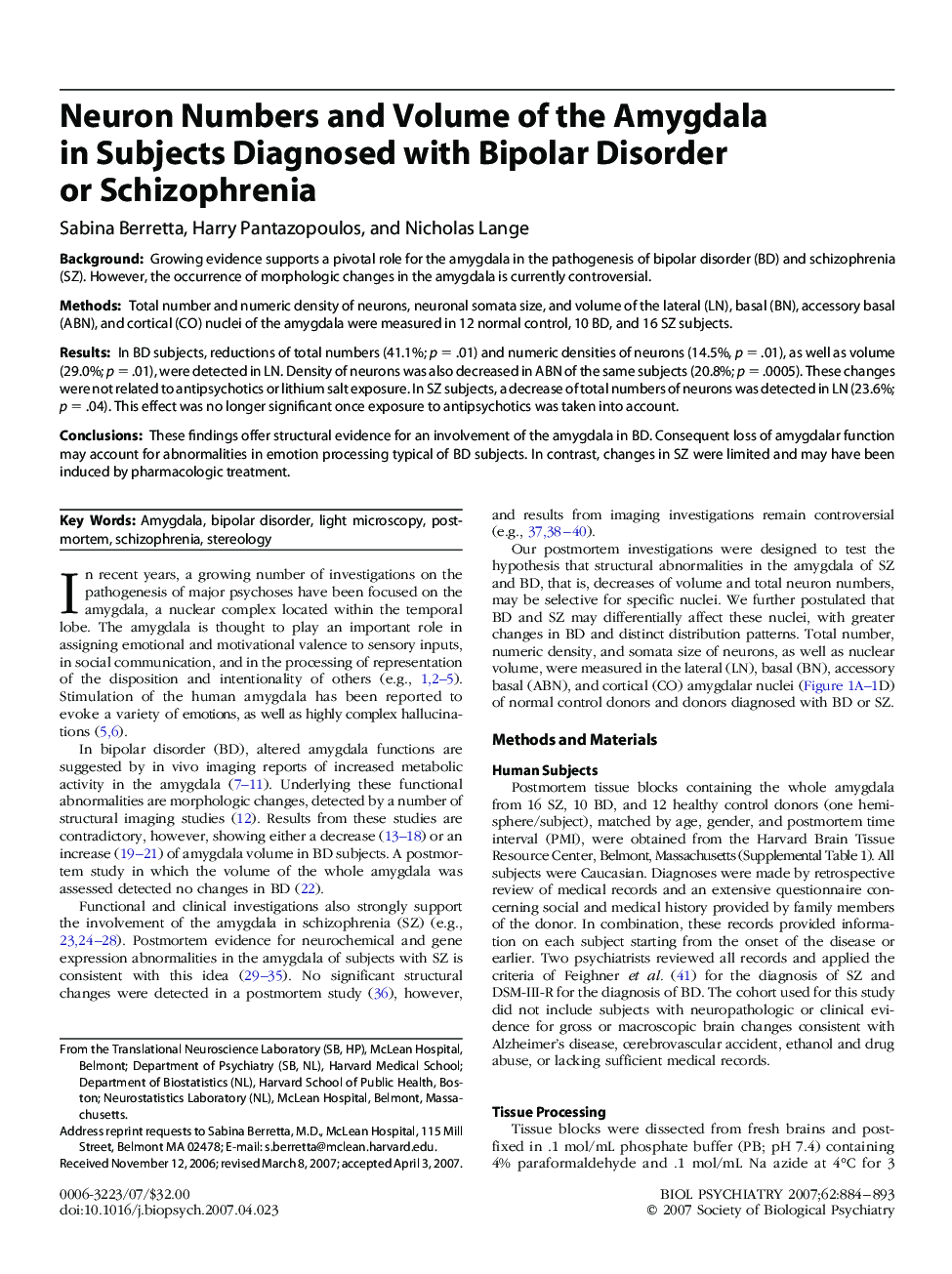| Article ID | Journal | Published Year | Pages | File Type |
|---|---|---|---|---|
| 4180324 | Biological Psychiatry | 2007 | 10 Pages |
BackgroundGrowing evidence supports a pivotal role for the amygdala in the pathogenesis of bipolar disorder (BD) and schizophrenia (SZ). However, the occurrence of morphologic changes in the amygdala is currently controversial.MethodsTotal number and numeric density of neurons, neuronal somata size, and volume of the lateral (LN), basal (BN), accessory basal (ABN), and cortical (CO) nuclei of the amygdala were measured in 12 normal control, 10 BD, and 16 SZ subjects.ResultsIn BD subjects, reductions of total numbers (41.1%; p = .01) and numeric densities of neurons (14.5%, p = .01), as well as volume (29.0%; p = .01), were detected in LN. Density of neurons was also decreased in ABN of the same subjects (20.8%; p = .0005). These changes were not related to antipsychotics or lithium salt exposure. In SZ subjects, a decrease of total numbers of neurons was detected in LN (23.6%; p = .04). This effect was no longer significant once exposure to antipsychotics was taken into account.ConclusionsThese findings offer structural evidence for an involvement of the amygdala in BD. Consequent loss of amygdalar function may account for abnormalities in emotion processing typical of BD subjects. In contrast, changes in SZ were limited and may have been induced by pharmacologic treatment.
